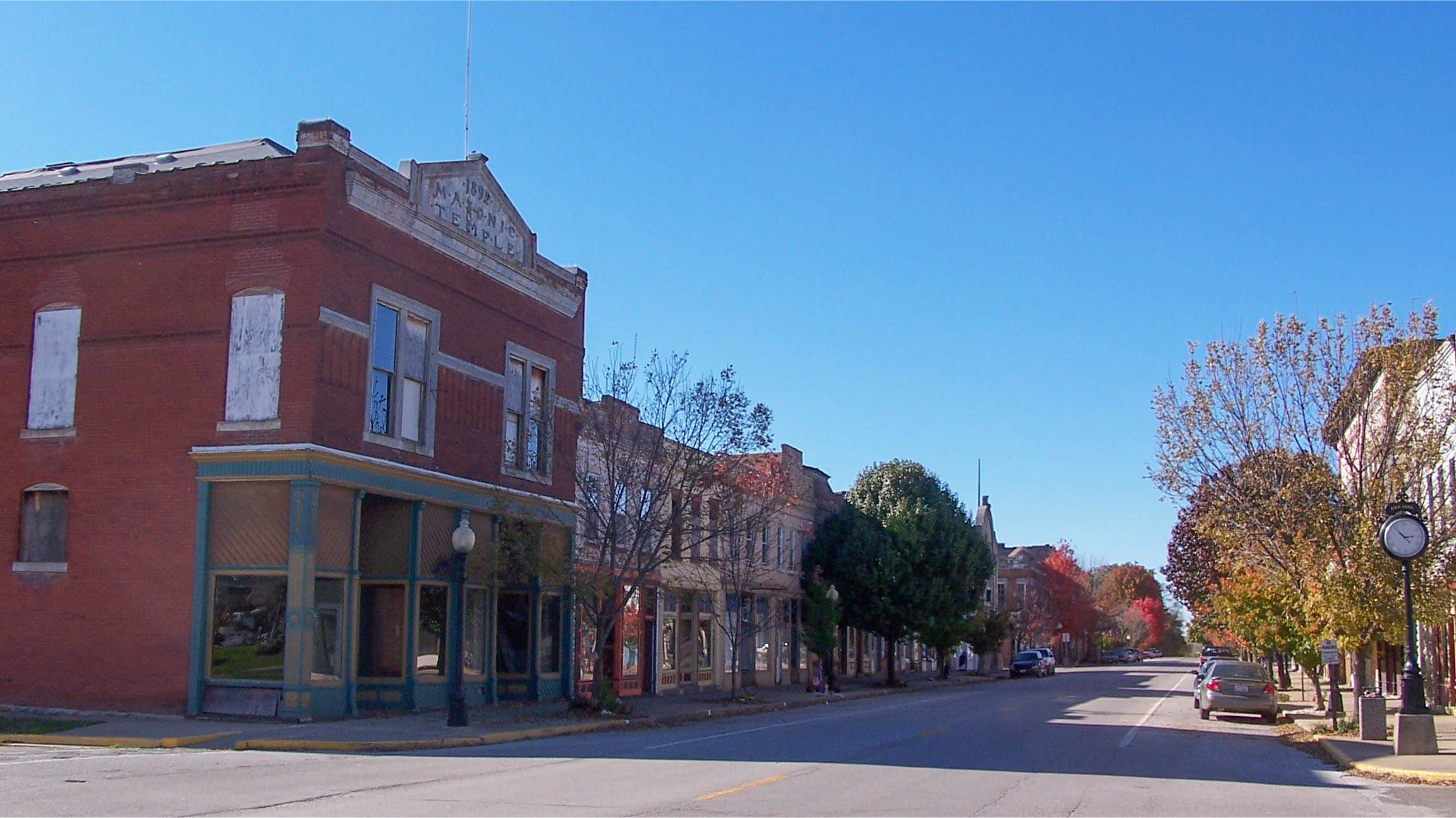Visitors Guide to Montrose
Lee County, Iowa
The first European to live in the Montrose area was Louis Honore Tesson, a French Canadian who was issued a claim of 7056 arpents (6073 acres) by the Spanish. This large claim included what is now Montrose and it is believed that Tesson's home was located near the foot of the hill on what is now River Road in the southern part of Montrose. Tesson was instructed as a condition to his claim that he buy furs, encourage the native tribes to adopt the Catholic religion, and to show them how to raise wheat, corn, and vegetables. Tesson was also to plant trees, for at that time there were very few trees in Iowa except along the streams. Tesson is credited with bringing some apple trees from St. Charles, MO and planting Iowa’s first apple orchard although some conflicting accounts give this credit to a half-breed by the name of Red-Bird, who was also known as Thomas Abbott. Tesson went into debt and in 1803 his claim was sold to Joseph Robidoux, one of the men to whom Tesson owed money.
The next settler was in Montrose was Captain James White who enclosed six or seven acres and built a double log cabin from trees growing on a nearby island in 1832. In 1834 the government bought the land from Captain White and erected the first Fort Des Moines. The military post was occupied by three companies of the First U.S. Dragoons, an elite cavalry unit whose presence help pacify the area after the recently concluded Black Hawk War. The fort was also used as a base for an 1835 exploration of the Des Moines River valley. In 1933, the State of Iowa opened the Dragoon Trail, a scenic and historic drive along the Des Moines River that follows the path of the 1835 expedition. The Dragoons stayed at Montrose until the spring of 1837 when they were reassigned to Fort Leavenworth in Kansas. The colonel's house became a hotel and was named the River House. The site of the old fort, now Riverview Park, is located at the river at the eastern end of Main Street. The fort is marked by a bronze plaque set in a boulder at the south end of the park. An interpretive panel about the first Fort Des Moines is located in Riverview Park in Montrose as well as a bronze plaque set in a boulder that was erected in 1923 by the Montrose Womans Civic Club.
Montrose is one of the first European settlements in the state of Iowa. The town was platted in 1837 by D.W. Kilbourne, a prominent Keokuk leader, who established a store and became postmaster in 1839. Kilbourne moved on to Fort Madison in 1843 and later became president of the Des Moines Valley Railroad Company. The settlement that grew up around the fort was originally called Cut-Nose Village in honor of a local chief. The name was changed to Mount of Roses when Kilbourne platted the town because of all of the wild roses that grew on nearby hillsides and later contracted to Montrose.
In January 1839, the barracks of the abandoned fort provided shelter for about 40 Mormon refugee families from Missouri, led by Israel Barlow. The families of Brigham Young, John Taylor, and Wilford Woodruff, all future presidents of the Church, were among those taking rooms in the barracks. Based on information provided by Barlow the Mormon Church purchased twenty thousand acres stretching westward from the village of Montrose that grew up around the fort. In 1841 Joseph Smith declared that it was now time to build Zarahemla, a new town adjacent and just west of Montrose. Thirty houses may have been built at Zarahemla, but only one lot was recorded as sold, and no trace of the community remains. Most of the Mormons of Lee County went with Brigham Young as he blazed the trail to Utah. An interpretive panel about the Mormons in Lee County is located in Riverview Park. Montrose is the start of the Iowa leg of the Mormon Pioneer National Historic Trail. The new temple on the hilltop at Nauvoo can be seen from Riverview Park.
Montrose became an important river town from the beginning of the steamboat era until the late 1870s. Montrose is located at the head of the Des Moines Rapids, a major impediment to river traffic on the Upper Mississippi. Cargo and passengers had to be “lightered,” transferred to small boats for travel over the rapids to Keokuk. The completion of a canal around the rapids in 1877 began to diminish the importance of the town. Montrose has been home to thriving industries: clam digging, saw mills, button factories, a garden tool factory, and coal and lumber yards. These businesses are no longer in existence because when the dam was built at Keokuk, these areas were submerged by Lake Cooper, which reaches its widest width at Montrose. Montrose is proud of its rich heritage. Montrose Riverfront, Inc. is comprised of many volunteers who keep Montrose history alive while planning for the future. They host the annual Pride of Montrose festival on Father’s Day weekend. Montrose is also home to the decades old Watermelon Festival, held annually the fourth Thursday, Friday and Saturday in August.











